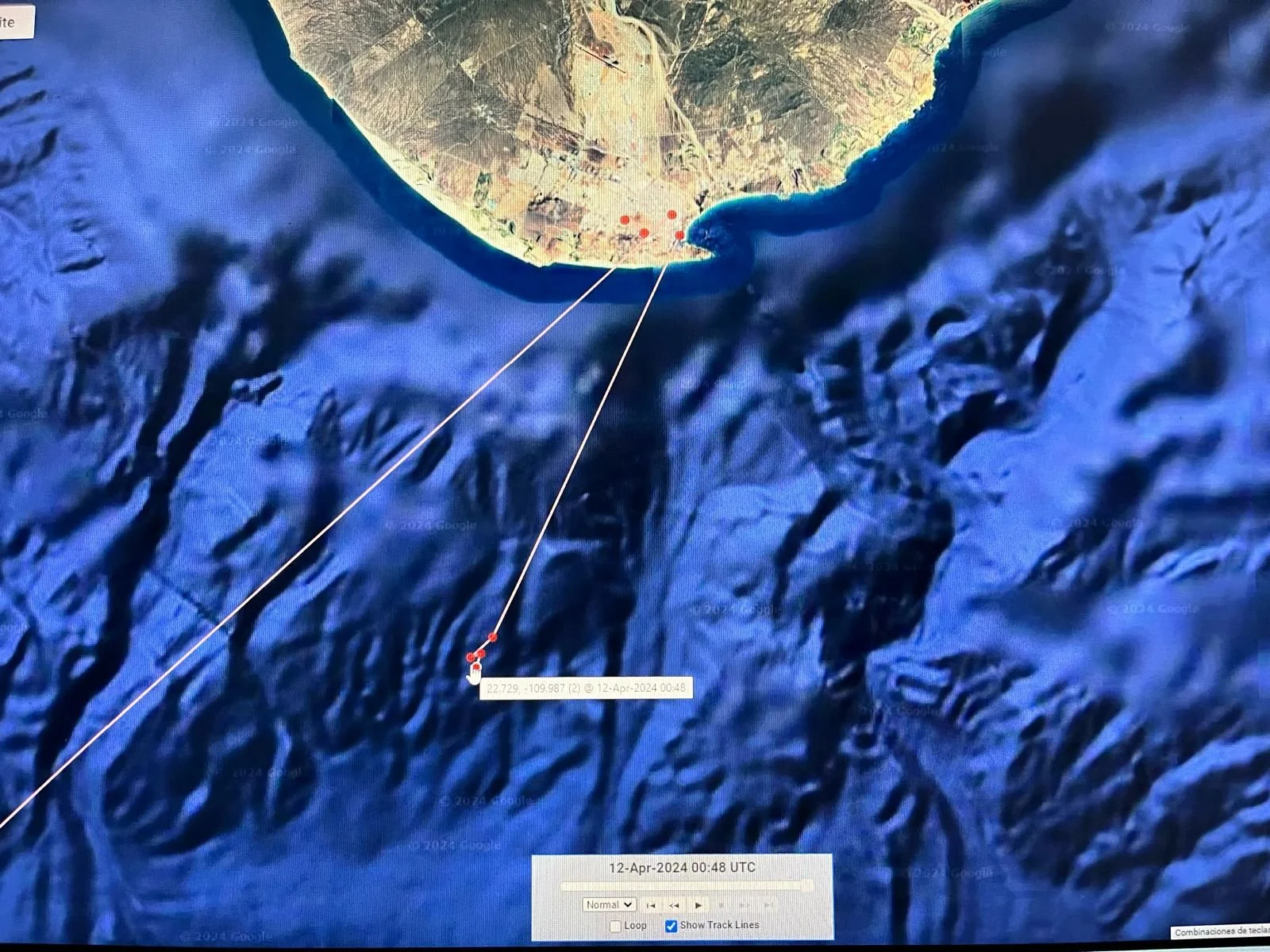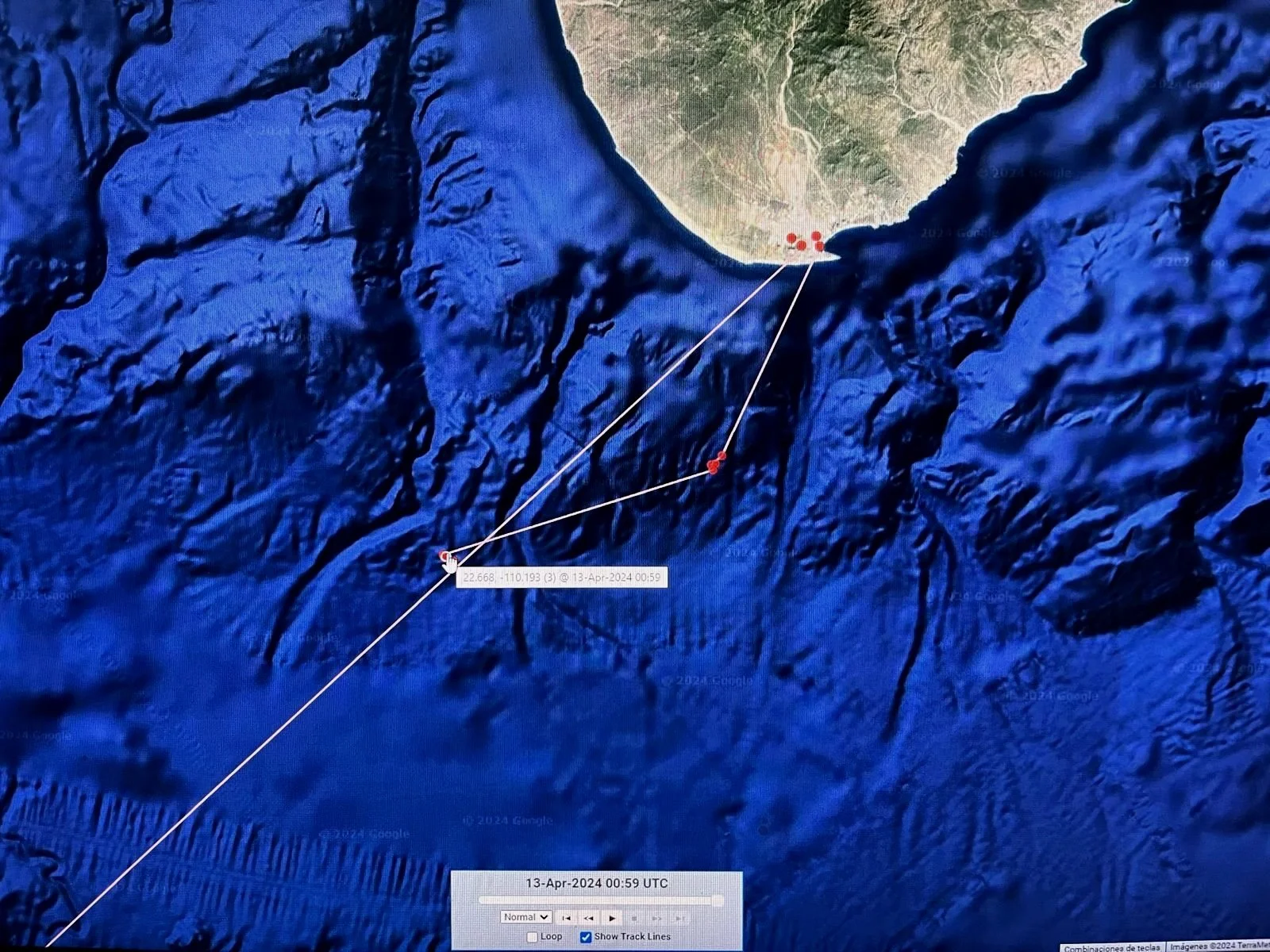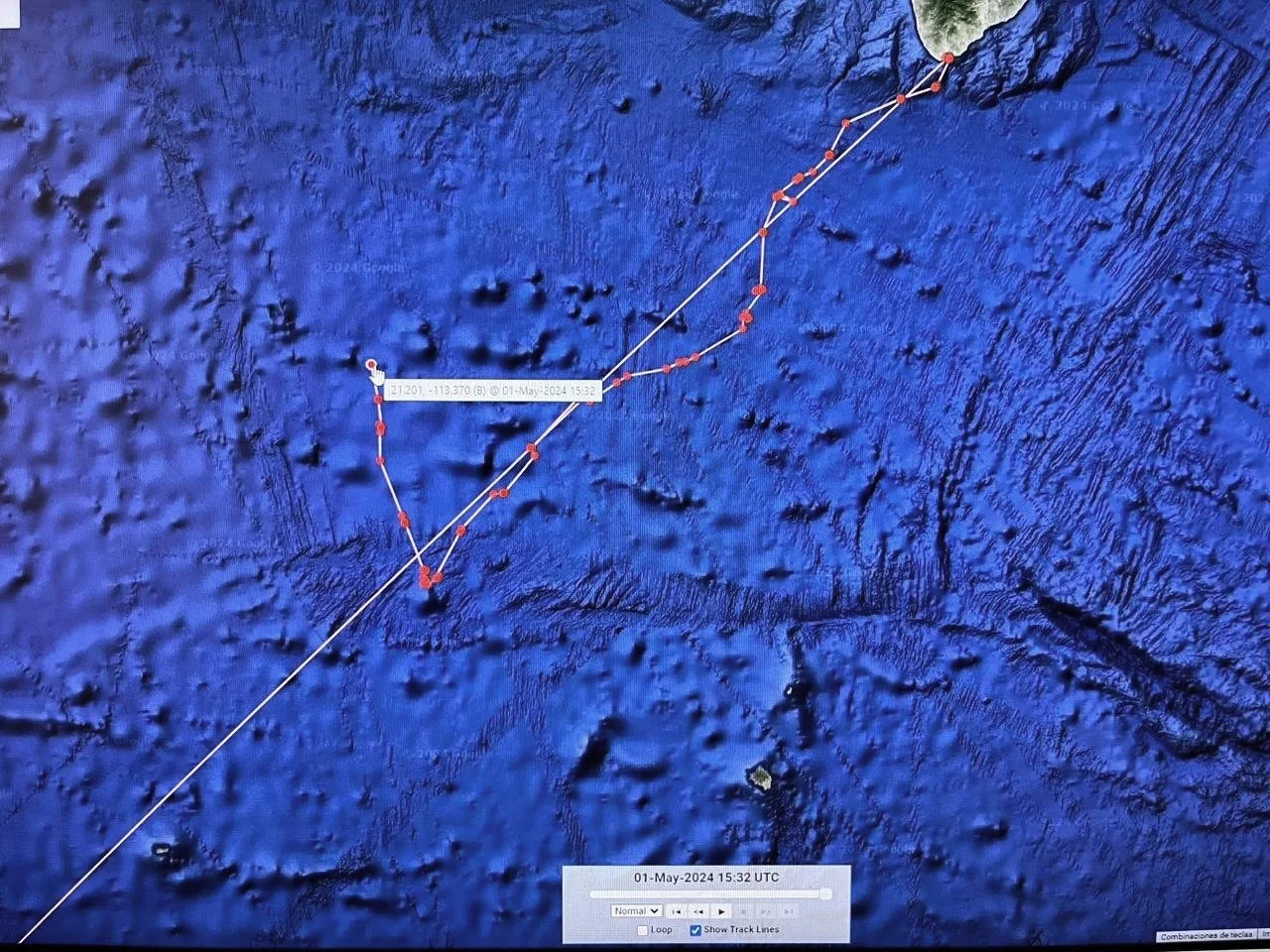
MAKO SHARK SATELLITE TAGGING
The Mexican northwest appears to be an important habitat for shortfin mako sharks of all sizes. In this region, lsurus oxyrinchus exhibits high levels of variability both within and between individuals in its movement patterns. The shortfin mako shark is a highly migratory species and satellite tagging studies have shown that some sharks swim long distances to ocean areas, but tend to stay within specific regions of ocean basins.
This project is particularly important since shortfin mako sharks are listed as “Endangered” on the IUCN Red List and have now also been included in Appendix II of CITES thanks to the proposal promoted by the Mexican government. The results will generate valuable information in an area with little data regarding the presence of this species and the importance of Cabo San Lucas for the shortfin mako shark life cycle and migratory route.
Project background:
According to data from our monitoring programme, the shortfin mako, despite being a highly migratory species, regularly visits the coast of Cabo San Lucas during late winter and spring. This represents a unique opportunity to conduct much-needed, fisheries-independent research on this endangered species. The Mexican Pacific could be the last healthy shortfin mako shark population stock and therefore, we need better understanding of the species dynamics to establish proper management measures. Satellite telemetry would help us answer questions like:
Are these mako sharks coming every year to Cabo or, we are seeing different individuals year by year?
Do they stay longer near Baja California Peninsula waters, or they leave Baja waters just after their pick season ends in Cabo?
Are these sharks moving towards the Gulf of California, or to the open waters of the Pacific Ocean?
Are mako sharks being fished during the national shark fishing band in Mexico?
MAKO_00001: on April 11th 2024, we deployed the first SPOT tag in a short fin mako shark from Cabo San Lucas. Until now, we have been able to track MAKO_00001 and it is still alive and moving. On may 1st, we could see it was around the Revillagigedo Archipelago.
MAKO_00001 TRACKING
Project Updates:
Project Activities:
Our goal is to expand our methodology and complement our short-fin mako shark monitoring study with satellite telemetry data.
COLLECTION OF BIOLOGICAL SAMPLES: for population genetics and trophic ecology studies, biopsies and blood samples are taken when possible. Shortfin mako populations can be genetically homogeneous over large geographic areas as a consequence of a few reproductively active migrants.
SATELLITE TAGGING: we are deploying SPOT transmitters in shortfin mako sharks. Satellite transmitters are designed to track the large-scale movements and behavior of fish and sharks.
CONVENTIONAL TAGGING: Spaghetti tags are placed on shortfin mako sharks, as well as blue sharks, and smooth hammerhead sharks. This type of tag is affixed to the base of the first dorsal fin to estimate the population size through recaptures.
WHY THE SHORTFIN MAKO SHARK?
This species is also heavily fished in Mexico for its meat which is consumed locally and for their fins which are exported to the Asian market. The SHORTFIN MAKO SHARK has low biological productivity, with a reproductive cycle of 3 years, with gestation periods of more than one year, and a late age of maturity; females reach sexual maturity at 19 years of age.
After the review of NOM-059 (normative instrument that identifies species or populations at risk in Mexico) in 2018, we noticed a great lack of data on mako sharks and this is needed to support this species inclusion in the Mexican Endangered Species List which will be next be revised in 2026.
Project specific goals:
Our objective is to use satellite telemetry and biological sampling of the shortfin mako shark, I. oxyrinchus. We aim to obtain information on:
Their horizontal movements and their migratory routes.
Identify the role of Los Cabos area for the life cycle of the shortfin mako shark.
Study the site fidelity of shortfin mako sharks off the coast of Cabo San Lucas.
Contrast the data obtained during monitoring through citizen science.
Estimate the residence pattern of I. oxyrinchus in the area.
Collect biological samples for subsequent genetic/trophic ecology analysis.
Expand information about the species through alliances with local NGO’s with related projects.






